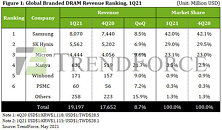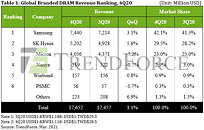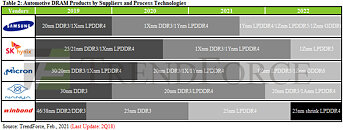DRAM Revenue Drops 5.5% in the First Quarter of 2025; SK hynix Overtakes Samsung for Top Spot
TrendForce's latest findings reveal that global revenue for the DRAM industry reached US$27.01 billion in 1Q25, marking a 5.5% QoQ decline. This downturn was driven by falling contract prices for conventional DRAM and a contraction in HBM shipment volumes. Samsung's redesign of its HBM3e products eased the HBM production squeezes. This prompted downstream players to clear inventories and extended the price declines seen since 4Q24.
Looking ahead to 2Q25, as PC OEMs and smartphone makers complete inventory corrections and ramp up system production ahead of the 90-day U.S. reciprocal tariff grace period, bit procurement momentum is expected to strengthen significantly. This will drive notable increases in supplier shipment volumes. On the pricing side, TrendForce forecasts a rebound across major application contract prices, with both conventional DRAM and combined DRAM (including HBM) contract prices expected to rise.
Looking ahead to 2Q25, as PC OEMs and smartphone makers complete inventory corrections and ramp up system production ahead of the 90-day U.S. reciprocal tariff grace period, bit procurement momentum is expected to strengthen significantly. This will drive notable increases in supplier shipment volumes. On the pricing side, TrendForce forecasts a rebound across major application contract prices, with both conventional DRAM and combined DRAM (including HBM) contract prices expected to rise.


























